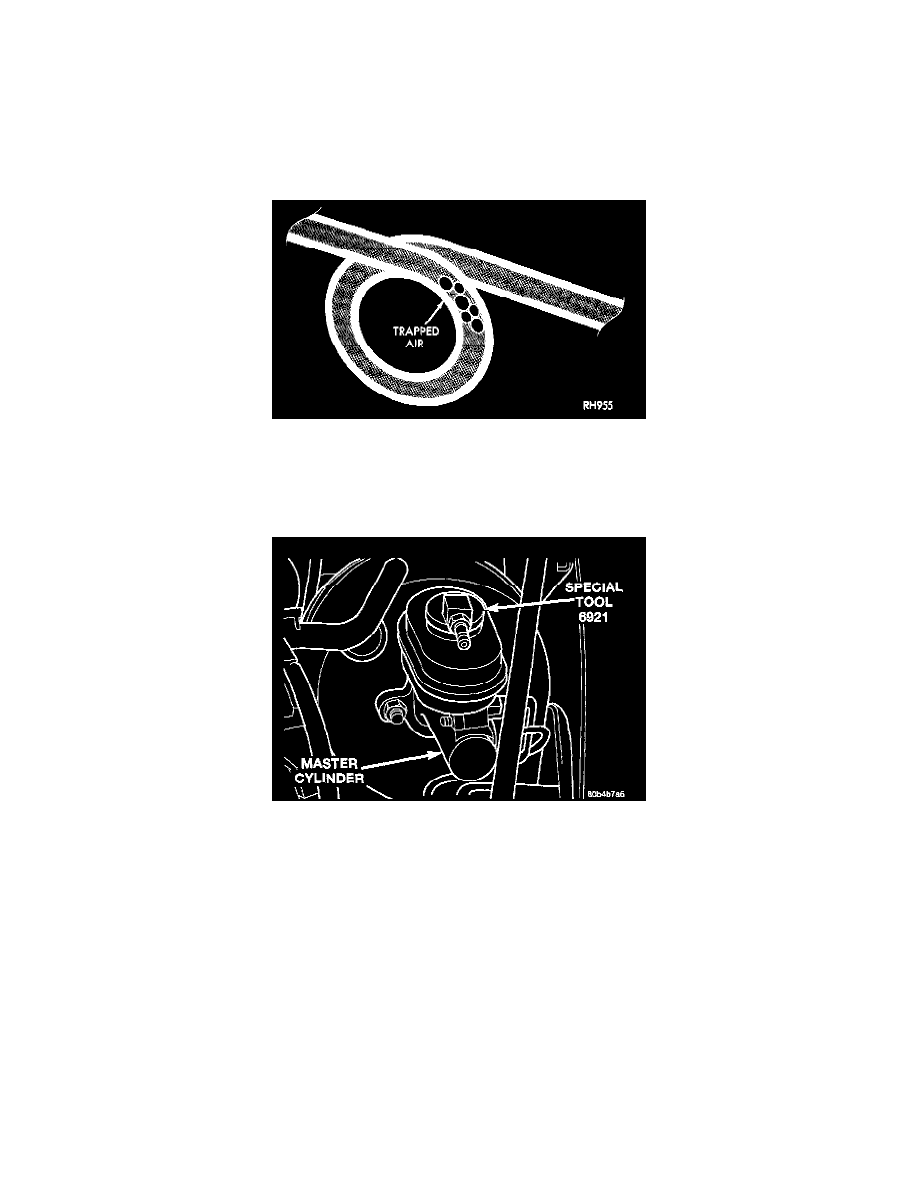Prowler V6-3.5L VIN G (1999)

Brake Bleeding: Service and Repair
Pressure Bleeding (Preferred Procedure)
Caution: Before removing the cap from the master cylinder fluid reservoir, thoroughly clean the cap and fluid reservoir to prevent dirt from dropping
into the master cylinder fluid reservoir.
Caution: Use bleeder tank Special Tool C-3496-B with adapter Special Tool 6921 to pressurize the hydraulic system for bleeding.
Follow the pressure bleeder manufacturer's instructions, for use of pressure bleeding equipment.
Trapped Air In Fluid Line
When bleeding the brake system, some air may be trapped in the brake lines or valves as far upstream as ten feet from the bleeder screw. Therefore, it
is essential to have a fast flow of a large volume of brake fluid when bleeding the brakes to ensure all the air gets out.
1. Remove the cap from the master cylinder fluid reservoir.
Pressure Bleeding Adapter Cap Installed On Master Cylinder
2. Install the Adapter Master Cylinder Pressure Bleed Cap, Special Tool 6921, on the fluid reservoir of the master cylinder. Attach the fluid hose
from the pressure bleeder to the fitting on Special Tool 6921.
3. Attach a clear plastic hose to the bleeder screw at one wheel and feed the hose into a clear jar containing fresh brake fluid.
Note: The following wheel sequence should be used when bleeding the brake hydraulic system. The use of this wheel sequence will ensure
adequate removal of all trapped air from the brake hydraulic system.
-
Left Rear Wheel
-
Right Front Wheel
-
Right Rear Wheel
-
Left Front Wheel
Caution: Slightly opening the bleeder screw often restricts the flow of brake fluid. A slow weak flow of brake fluid from the bleeder screw will
NOT get all the air out.
4. Open the left rear brake caliper bleeder screw at least one full turn or more to obtain an adequate flow of brake fluid.
5. After 4 to 8 ounces of brake fluid has been bled through the left rear brake caliper and hydraulic system, with an air-free flow of brake fluid
